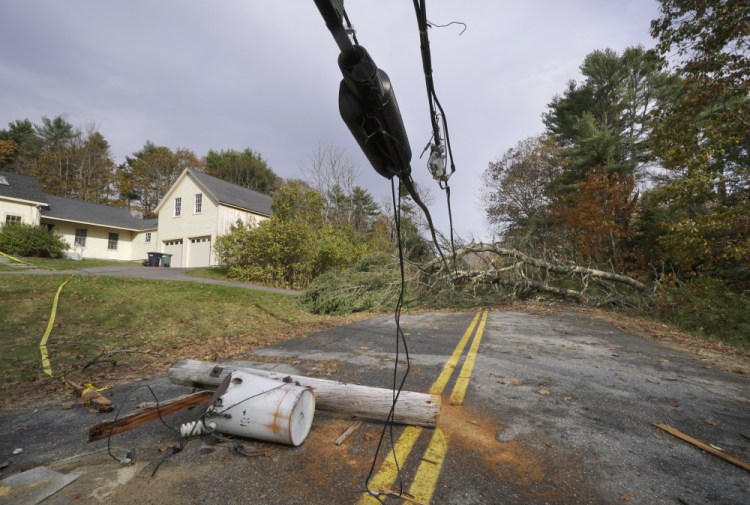Maine lawmakers plan to consider aggressive tree cutting, underground power lines and other measures in response to a storm that left some homes and businesses in the dark for up to 10 days.
The Legislature’s Energy, Utilities and Technology Committee will listen to ideas for reducing the number and duration of power outages when lawmakers reconvene in the new year, said Democratic Rep. Seth Berry, co-chairman of the panel.
The proposals are expected to run the gamut, including expanded tree trimming, burying more power lines, using rubberized power lines and even encouraging “micro grids” for neighborhoods or institutions, he said.
At the peak, more than half of Maine’s residents were in the dark after a powerful storm blew down thousands of trees and toppled power lines. It took more than a week for utility crews to restore power to nearly 500,000 homes and businesses.
A spokesman for the state’s largest utility, Central Maine Power, said its crews restored power in less than half the time it took during the 1998 ice storm, when there were fewer outages.
“We think that’s a solid reflection on the job we did. It was done quickly, efficiently and, most importantly, safely,” spokesman John Carroll said Monday.
The Public Utilities Commission launched hearings after the 1998 ice storm. The regulatory panel plans to analyze utility filings after the latest storm before determining how best to proceed, said Harry Lamphear, the commission’s administrative director.
Central Maine Power stepped up tree cutting after the ice storm and again in 2008 after the so-called Patriot’s Day Storm, and crews now trim trees on a five-year cycle, Carroll said. That means crews trim trees along 5,000 miles of CMP’s power lines each year, he said.
CMP can change the requirements for trimming and bury more lines, but ratepayers may balk at aggressive trimming and added costs, Carroll said.
“We support things that can make the system more resistant to weather. I’m just trying to point out that there are practical limitations,” he said.
CMP believes the Maine Public Utilities Commission, not the Legislature, is best suited to tackle regulations related to utility infrastructure, Carroll said.
Berry said it’s important for lawmakers to explore the response to the storm.
Examples of problems included a local farm owner who was without power for 10 days even though the CMP website said power would be restored on the fifth day. After power was restored, an out-of-state crew arrived to restore power, underscoring confusion, he said.
Going forward, the state can expect more frequent and more intense storms due to climate change, so it’s important to prepare with a power grid that’s “smarter and more resilient,'” Berry said.
“It’s likely that we’ll get more storms like this. Sixty-five to 70 miles per hour isn’t all that fast,” he said, referring to a wind gust of 69 mph recorded in Portland. “What are we going to do when it’s 110 mph?”
Send questions/comments to the editors.



Comments are no longer available on this story